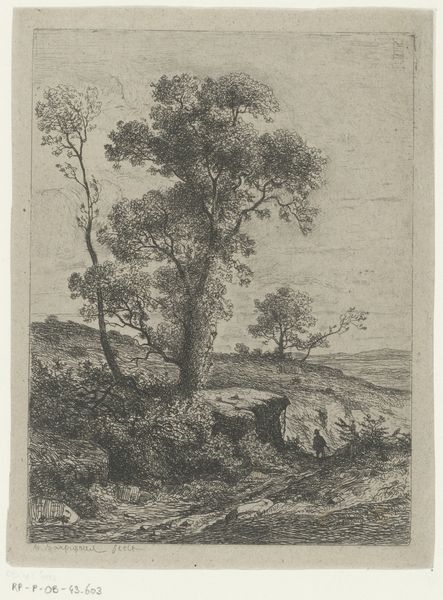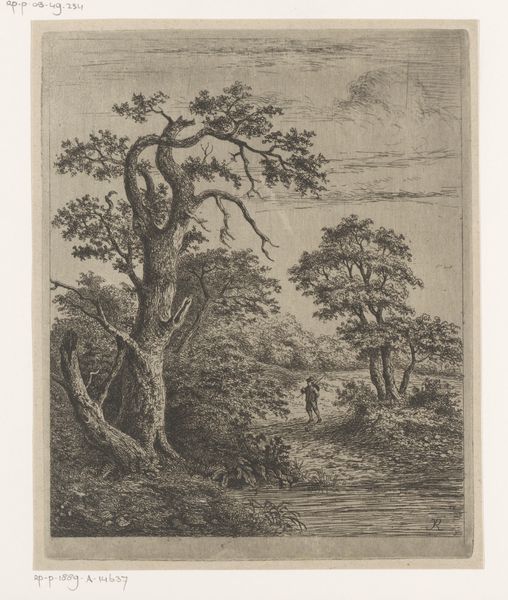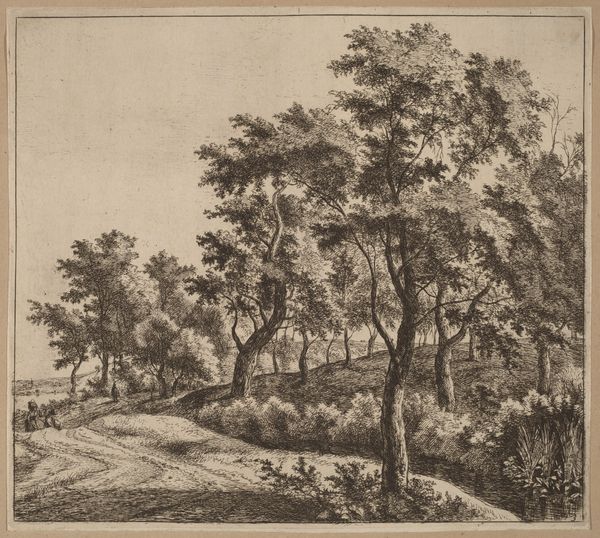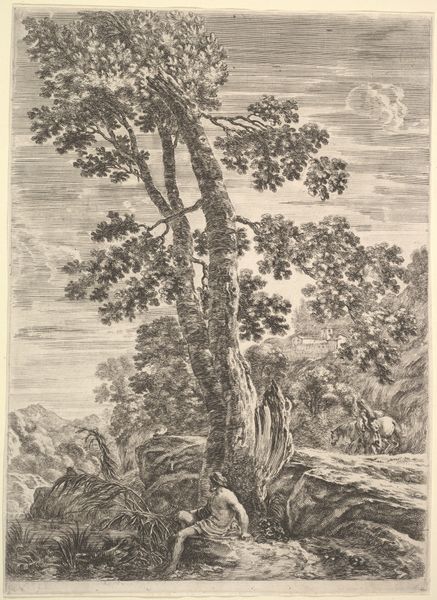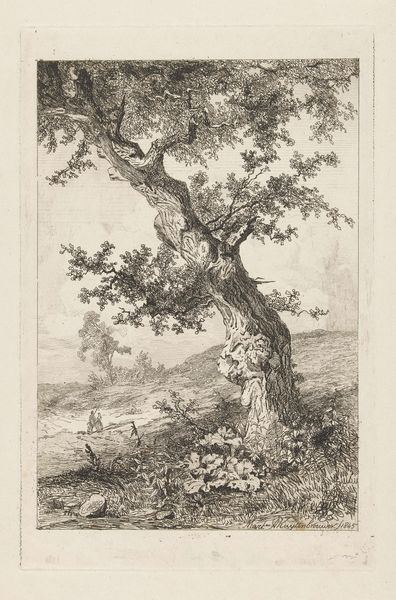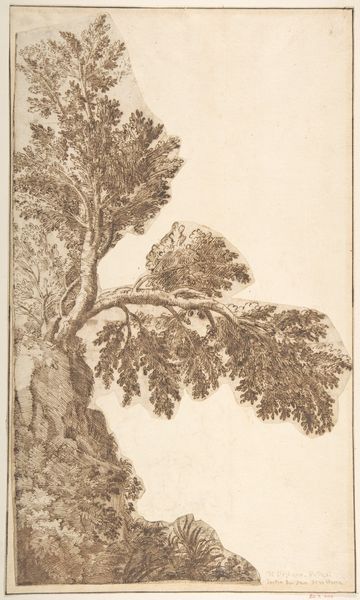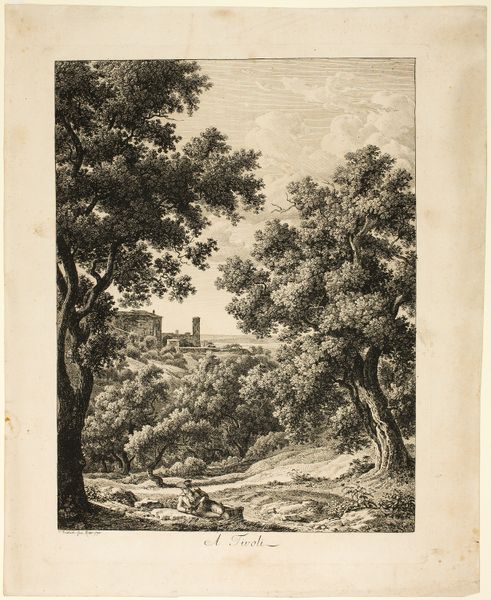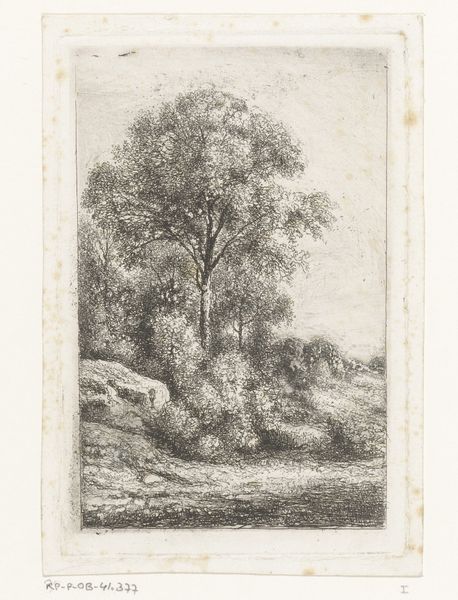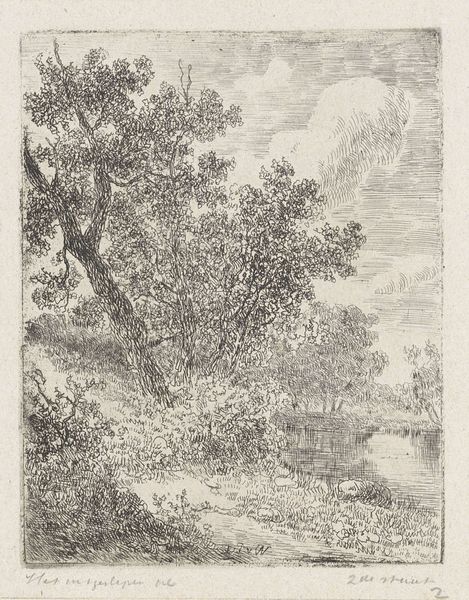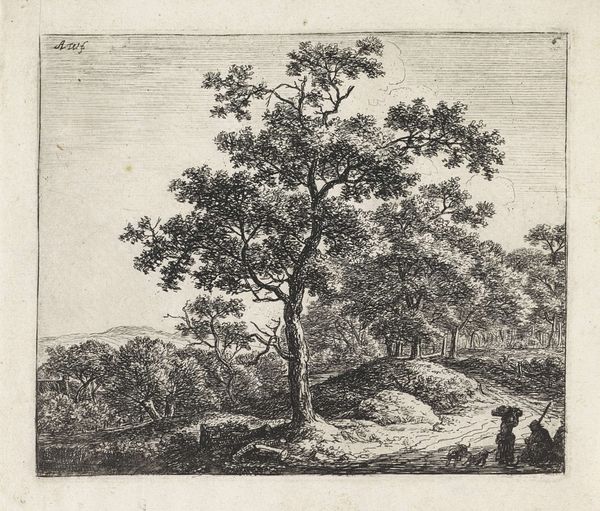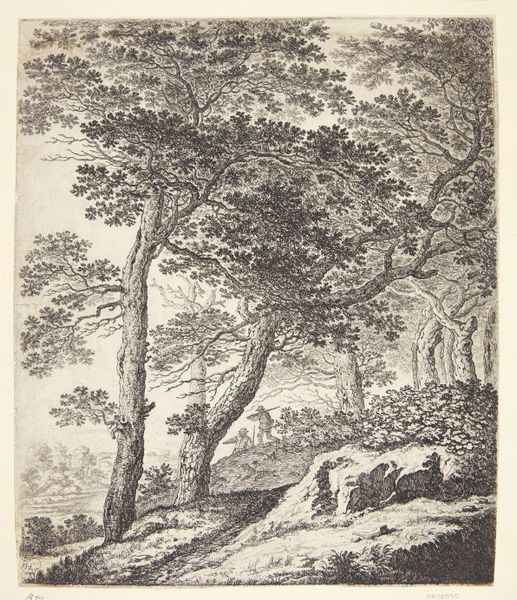
Dimensions: 77 mm (height) x 55 mm (width) (plademaal)
"Et Landskab," or "A Landscape," was made by B. Flügge sometime between 1659 and 1759, using the technique of etching. The image is created by drawing into a waxy, acid-resistant ground on a metal plate. When acid is applied, it bites into the exposed metal, creating lines. Ink fills these lines, and is then transferred to paper. The fineness of the lines and the overall tonality depend on the artist's control of the acid and the pressure of the printing press. In this small landscape, Flügge’s skillful manipulation of the etching process brings a sense of depth and atmosphere to the scene. The image is a testament to the labor and skill involved in traditional printmaking, a process by which images could be reproduced and disseminated widely. By mastering the craft of etching, artists like Flügge could engage with a broader audience and participate in the burgeoning visual culture of their time. So, considering the materials, the making, and the social context, we begin to grasp the artwork’s full significance, challenging traditional notions of fine art versus craft.
Comments
No comments
Be the first to comment and join the conversation on the ultimate creative platform.

